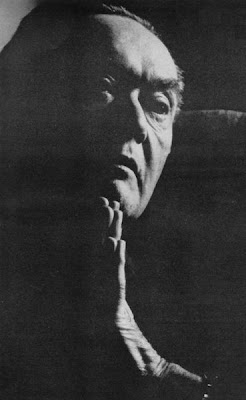I realized belatedly that by writing about Andrew Weems after his play Namaste Man had closed, I may have denied some readers who live in the vicinity of Seattle’s Intiman Theater the opportunity to see the show for themselves. I didn’t mean to cheat you: the fact that I couldn’t get to Seattle was so cruel and all-consuming to me that I ignored what was possible for others.
Now Andy is playing George in Who’s Afraid of Virginia Woolf? at Baltimore’s Centerstage, 22 October–30 November. Although Andy didn’t write the play, it is a very good one, and I have been yearning to see him in the role pretty much since the day we met. I have often said I would kill for the chance to see him play George, and now the chance is upon me. Need I therefore commit murder? It seems a comparatively easy (and morally upright) task merely to take the train to Baltimore, especially since I am already in the U.S. at the moment.
After all, part of the fun of knowing performers is actually getting to see them at work. One can watch a chartered accountant at work, too, but it is much less fun, both for you and for the accountant. For your friends who are actors or singers, getting watched comes with the territory. Moreover, those moments are awkward when you try to explain to your friend why you didn’t see her latest show, which is why I just ordered a ticket to hear Susan Graham at the Metropolitan Opera. I need to hear her sing Berlioz’ La Damnation de Faust.
I can write it off my taxes. As a medical expense. (Faust is a doctor, after all.)
 Famed Andrew Weems Celebrity Impersonator Rick Burtone (left),
Famed Andrew Weems Celebrity Impersonator Rick Burtone (left),
with costar Shirley Himmelfarber,
in a scene from his touring Weems Tribute Revue
If you’re planning to be in the Baltimore area, why not join me for Virginia Woolf on November 2? We’ll make a theater party of it!
Now Andy is playing George in Who’s Afraid of Virginia Woolf? at Baltimore’s Centerstage, 22 October–30 November. Although Andy didn’t write the play, it is a very good one, and I have been yearning to see him in the role pretty much since the day we met. I have often said I would kill for the chance to see him play George, and now the chance is upon me. Need I therefore commit murder? It seems a comparatively easy (and morally upright) task merely to take the train to Baltimore, especially since I am already in the U.S. at the moment.
After all, part of the fun of knowing performers is actually getting to see them at work. One can watch a chartered accountant at work, too, but it is much less fun, both for you and for the accountant. For your friends who are actors or singers, getting watched comes with the territory. Moreover, those moments are awkward when you try to explain to your friend why you didn’t see her latest show, which is why I just ordered a ticket to hear Susan Graham at the Metropolitan Opera. I need to hear her sing Berlioz’ La Damnation de Faust.
I can write it off my taxes. As a medical expense. (Faust is a doctor, after all.)
 Famed Andrew Weems Celebrity Impersonator Rick Burtone (left),
Famed Andrew Weems Celebrity Impersonator Rick Burtone (left),with costar Shirley Himmelfarber,
in a scene from his touring Weems Tribute Revue
If you’re planning to be in the Baltimore area, why not join me for Virginia Woolf on November 2? We’ll make a theater party of it!




























